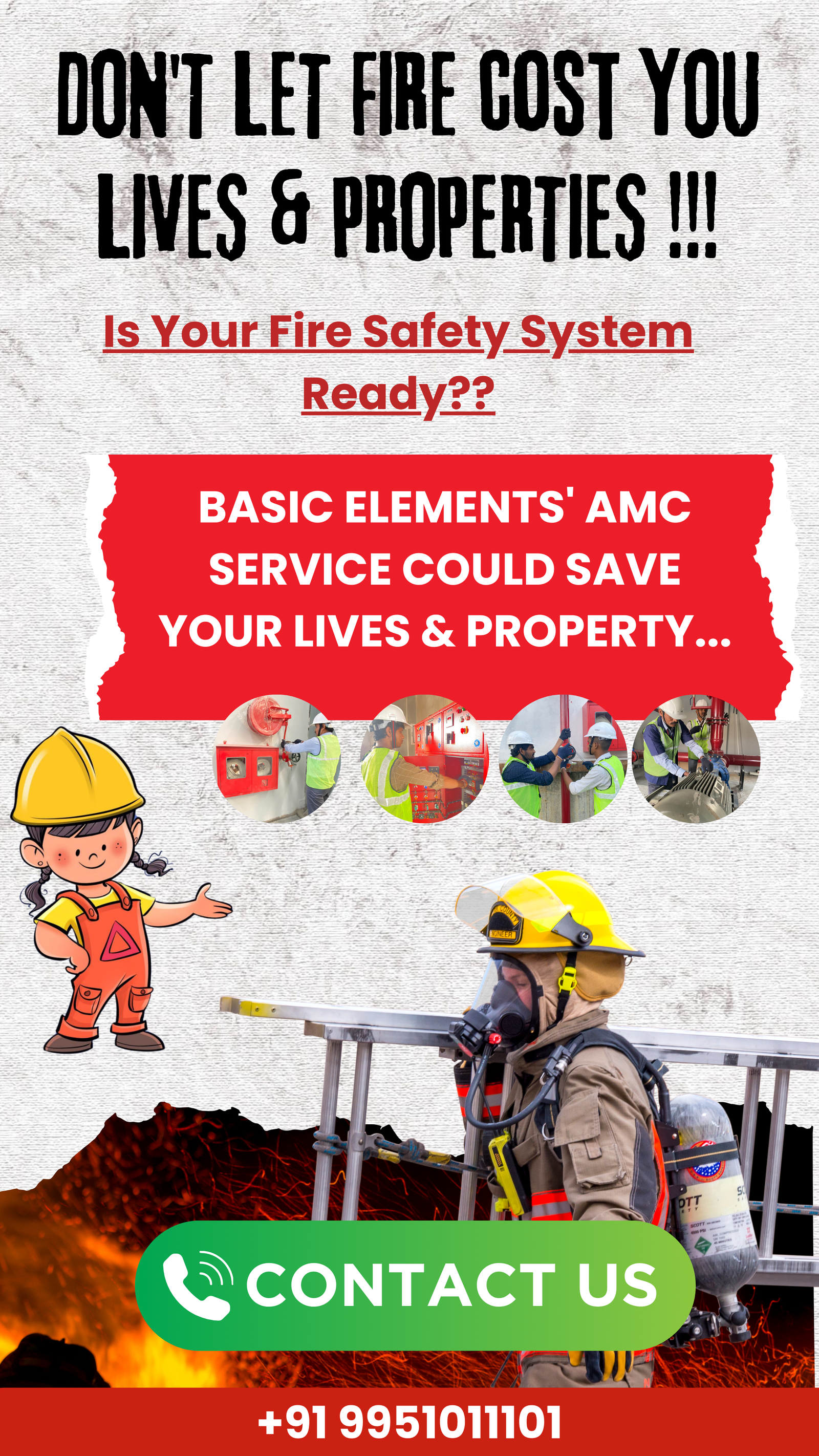Fire safety is a critical aspect of building design and management, with fire pump rooms playing a pivotal role in protecting lives and property. In this blog post, we’ll explore the key components of fire pump rooms, their design considerations, and the importance of proper maintenance.
Whether you’re a building owner, facility manager, or simply interested in fire safety, this information will help you understand how these vital systems work to keep buildings safe during emergencies.
What is a Fire Pump Room and Its Importance in Fire Safety?
Fire safety is a crucial aspect of any building’s design and operation. One key component of many fire protection systems is the fire pump room. Let’s explore what a fire pump room is and why it’s so important for keeping people safe.
What is a Fire Pump Room?
A fire pump room, also known as a fire fighting pump room, is a special area in a building that houses the main parts of the fire protection system. The star of this room is the fire pump. This pump is a powerful machine that pushes water through the building’s fire sprinkler system and fire hose connections.
The room also contains other important equipment like:
- Control panels
- Valves
- Pipes
- Backup power systems

Why is a Fire Pump Room Important?
- Ensures Water Pressure: The main job of a fire pump is to make sure there’s enough water pressure to fight fires effectively. Without good pressure, sprinklers and fire hoses might not work well.
- Quick Response: In a fire, every second counts. The fire pump room allows for a fast response, getting water to where it’s needed right away.
- Meets Safety Standards: Many buildings are required by law to have fire pump rooms. These rooms help meet important fire safety standards.
- Protects the Whole Building: A well-designed fire pump room can supply water to multiple floors and areas of a building, providing widespread protection.
- Backup Power: Many fire pump rooms have backup power sources. This means the system can still work even if the main power goes out during a fire.
Ensures Water Pressure: The main job of a fire pump is to make sure there’s enough water pressure to fight fires effectively. Without good pressure, sprinklers and fire hoses might not work well.
- Quick Response: In a fire, every second counts. The fire pump room allows for a fast response, getting water to where it’s needed right away.
- Meets Safety Standards: Many buildings are required by law to have fire pump rooms. These rooms help meet important fire safety standards.
- Protects the Whole Building: A well-designed fire pump room can supply water to multiple floors and areas of a building, providing widespread protection.
- Backup Power: Many fire pump rooms have backup power sources. This means the system can still work even if the main power goes out during a fire.
Keeping the Fire Pump Room in Good Shape
For a fire pump room to do its job, it needs to be well-maintained. This includes:
- Regular inspections
- Testing the pump and other equipment
- Keeping the room clean and free of clutter
- Making sure access to the room is clear for firefighters

Key Components of a Fire Fighting Pump Room
A fire fighting pump room is a critical part of a building’s fire protection system. Let’s take a closer look at the main parts you’d find in this important room.
1. Fire Pump
The fire pump is the heart of the system. It’s a powerful machine that moves water through the building’s fire protection pipes. Here are some key things to know about fire pumps:
- They come in different sizes depending on the building’s needs
- They can be electric or diesel-powered
- Some buildings have multiple pumps for extra safety

2. Water Supply System
The water supply system makes sure there’s always water ready for firefighting. It includes:
- Water storage tanks
- Pipes that bring water into the pump room
- Valves to control water flow

3. Control Panel
The control panel is like the brain of the fire pump room. It:
- Starts and stops the pump
- Shows important information about the system
- Sends alerts if there’s a problem

4. Pressure Maintenance Pump (Jockey Pump)
This smaller pump keeps the right amount of pressure in the pipes when the main pump isn’t running. It helps the system react quickly when there’s a fire.

5. Test Header
The test header is used to check if the pump is working correctly. It’s usually found outside the building and looks like a row of pipe connections.

6. Pressure Relief Valve
This valve makes sure the pressure in the pipes doesn’t get too high, which could cause damage.

7. Suction and Discharge Pipes
These pipes move water into and out of the pump. The suction pipe brings water to the pump, and the discharge pipe sends it to the sprinklers and fire hoses.
8. Fuel System (for Diesel Pumps)
If the pump runs on diesel, there will be:
- A fuel tank
- Fuel lines
- Batteries for starting the engine
9. Ventilation System
The pump room needs good air flow to:
- Keep equipment cool
- Remove exhaust from diesel engines
- Prevent moisture buildup
10. Backup Power Supply
Many pump rooms have a backup power source, like a generator, to keep things running if the main power goes out.
Why These Components Matter
Each part of the fire fighting pump room plays a crucial role:
- They work together to provide a reliable water supply for fighting fires
- They help meet fire safety rules and standards
- They can make the difference in protecting lives and property during a fire
Regular checks and maintenance of all these components are essential to keep the system ready for action at all times.
The Role of Signage in Fire Pump Rooms: Understanding the Regulations
When it comes to fire safety, every detail matters. One often overlooked but crucial aspect is proper signage in fire pump rooms. Let’s explore why signs are so important and what rules govern their use.
Why Is Signage Important in Fire Pump Rooms?
- Quick Identification: In an emergency, firefighters and other responders need to find the fire pump room quickly. Clear signs help save precious time.
- Safety Information: Signs provide important safety information to anyone entering the room.
- Compliance: Proper signage helps building owners meet legal requirements for fire safety.
- Maintenance Guidance: Signs can remind staff about maintenance needs and procedures.
Key Regulations for Fire Pump Room Signage
Different countries and regions may have slightly different rules, but here are some common regulations:
- Room Identification: The entrance to the fire pump room must have a sign clearly stating “FIRE PUMP ROOM” or similar wording.
- Letter Size: The letters on the main sign usually need to be at least 2 inches (5 cm) tall and in a color that stands out against the background.
- Equipment Labels: Each major piece of equipment in the room should be labeled with its name and function.
- Operating Instructions: There should be clear, step-by-step instructions for starting the fire pump manually.
- Pressure Information: Signs must show the correct pressure settings for the fire pump system.
- Electrical Warnings: If the pump is electric, there must be signs warning of high voltage.
- No Storage: A sign stating “No Storage in This Room” is often required to keep the area clear.
Types of Signs You Might See in a Fire Pump Room
- Fire Pump Room Sign: This is the main sign on the door or near the entrance.
- Equipment Identification Signs: Labels for pumps, controllers, and other major parts.
- Safety Warning Signs: These warn about dangers like high voltage or loud noises.
- Operational Signs: Instructions for starting, stopping, or maintaining equipment.
- Emergency Contact Information: Who to call if there’s a problem with the system.
The Importance of Clear Labeling
Clear labels are not just about following rules. They’re about safety and effectiveness:
- They help prevent mistakes that could put lives at risk.
- They make training new staff easier.
- They assist maintenance workers in doing their jobs correctly.
- They guide emergency responders who might not be familiar with your specific setup.
Maintaining Your Signage
Having the right signs is just the start. You also need to:
- Keep signs clean and easy to read.
- Replace damaged or faded signs promptly.
- Update signs if equipment or procedures change.
- Make sure signs are well-lit and visible in low light conditions.
Fire Fighting Pipe Size Requirements: Ensuring Adequate Water Flow
When it comes to fire safety, having the right amount of water available at the right pressure is crucial. The size of the pipes in a firefighting system plays a big role in making this happen. Let’s explore why pipe size matters and how to determine the right size for your system.
Why Pipe Size Matters
The size of fire fighting pipes is important because:
- Water Flow: Larger pipes can carry more water.
- Pressure: Pipe size affects water pressure at the outlets (like sprinklers or hoses).
- System Performance: The right pipe size helps the whole system work as it should.
- Legal Requirements: Building codes often specify minimum pipe sizes for fire safety.
Factors That Affect Pipe Size Requirements
Several things influence the size of pipes needed:
- Building Size and Type: Larger or higher-risk buildings usually need bigger pipes.
- Water Demand: How much water the system needs to deliver in an emergency.
- Distance: Longer pipe runs may need larger diameters to maintain pressure.
- Pump Capacity: The size and power of the fire pump affect pipe size needs.
- Number of Outlets: More sprinklers or hose connections may require larger pipes.
Common Pipe Sizes for Fire Fighting Systems
While exact sizes can vary, here are some common pipe diameters used in fire fighting systems:
- Main Risers: Often 4 to 8 inches (100 to 200 mm)
- Branch Lines: Usually 1 to 3 inches (25 to 75 mm)
- Underground Mains: Typically 6 to 12 inches (150 to 300 mm)
Remember, these are just examples. The right size for your system might be different.
Hydraulic Calculations: Getting the Size Right
To figure out the right pipe size, fire safety engineers use hydraulic calculations. These calculations consider:
- Flow Rate: How much water needs to move through the pipes.
- Pressure Loss: How much pressure is lost due to friction in the pipes.
- Elevation Changes: How height differences affect pressure.
- System Demands: The required pressure and flow at the most remote point in the system.
These calculations can be complex, which is why they’re usually done by experts using specialized software.
The Dangers of Wrong Pipe Sizes
Using the wrong pipe size can lead to serious problems:
- Too Small: Can result in not enough water or pressure where it’s needed.
- Too Large: Can waste money and cause water to move too slowly, leading to potential water quality issues.
Regulations and Standards
Pipe size requirements are usually set by local building codes and fire safety standards. In many places, these are based on standards like:
- NFPA 13 (for sprinkler systems)
- NFPA 14 (for standpipe systems)
- NFPA 20 (for fire pumps)
Always check your local regulations to ensure compliance.
Maintaining Your Pipe System
Once you have the right size pipes installed:
- Regular Inspections: Check for leaks, corrosion, or damage.
- Flushing: Periodically flush the system to remove any buildup.
- Testing: Conduct regular flow tests to ensure the system still performs as designed.
- Documentation: Keep records of all tests and maintenance.
Design Considerations for an Effective Fire Pump House
A well-designed fire pump house is crucial for ensuring the safety and effectiveness of a building’s fire protection system. Let’s explore the key factors to consider when designing a fire pump house.
Location and Size
- Accessibility: The pump house should be easily accessible for firefighters and maintenance personnel.
- Proximity to Water Source: Ideally, it should be close to the main water supply.
- Size: The room must be large enough to house all necessary equipment and allow for maintenance work.
Layout of a Fire Pump Room
An effective layout should include:
- Pump Placement: Centrally located for easy access and maintenance.
- Controller Location: Near the pump, but protected from water spray.
- Piping Arrangement: Organized to minimize bends and maximize efficiency.
- Maintenance Space: Adequate clearance around all equipment for repairs and inspections.
Structural Considerations
- Fire Resistance: The pump house should be built with fire-resistant materials.
- Flood Protection: If in a flood-prone area, consider elevated construction or waterproofing.
- Seismic Design: In earthquake-prone regions, ensure the structure can withstand seismic activity.
Ventilation Requirements
Proper ventilation is critical for several reasons:
- Temperature Control: Prevents overheating of equipment.
- Exhaust Removal: For diesel-powered pumps, exhaust must be vented safely.
- Humidity Control: Reduces moisture that could damage electrical components.
Ventilation systems should include:
- Intake and exhaust vents
- Fans or blowers
- Temperature monitoring devices
Electrical Considerations
- Power Supply: Reliable primary power source with backup generators.
- Lighting: Adequate lighting for operations and maintenance.
- Electrical Safety: Proper grounding and protection from water exposure.
Water Supply and Drainage
- Water Source: Ensure a reliable and sufficient water supply.
- Drainage System: To handle water from testing and potential leaks.
- Backflow Prevention: To protect the main water supply from contamination.
Accessibility and Maintenance Considerations
- Door Size: Large enough to move equipment in and out.
- Walkways: Clear pathways around all equipment.
- Lifting Mechanisms: For heavy components that may need replacement.
- Storage: Space for spare parts and maintenance tools.
Safety Features
- Fire Extinguishers: Appropriate types and quantities.
- Emergency Lighting: In case of power failure.
- Safety Signage: Clear labels and instructions for all equipment.
- First Aid Kit: For minor injuries during maintenance.
Environmental Control
- Heating: To prevent freezing in cold climates.
- Cooling: To prevent overheating in warm climates.
- Humidity Control: To protect electrical components from moisture damage.
Monitoring and Control Systems
- Alarm Systems: To alert personnel of any issues.
- Remote Monitoring: For off-site observation of pump status.
- Data Logging: To record performance and maintenance history.
Compliance with Regulations
Ensure the design meets all local, state, and national regulations, including:
- Building codes
- Fire safety standards (e.g., NFPA 20 in the United States)
- Electrical codes
- Environmental regulations
Future Expansion
- Scalability: Consider future needs and allow space for additional equipment.
- Upgradability: Design with the possibility of technology upgrades in mind.
Regular Maintenance Practices for Fire Fighting Pumps to Ensure Reliability
Fire fighting pumps are critical components of a building’s fire protection system. To ensure they work when needed, regular maintenance is essential. Let’s explore the key maintenance practices, testing protocols, and common troubleshooting issues for fire pumps.
Why Regular Maintenance is Crucial
- Reliability: Ensures the pump will work in an emergency.
- Longevity: Properly maintained pumps last longer.
- Cost-Effective: Regular maintenance prevents expensive breakdowns.
- Legal Compliance: Many jurisdictions require regular maintenance and testing.
Regular Maintenance Tasks
Weekly Checks
- Visual Inspection: Look for leaks, unusual noises, or vibrations.
- Gauge Readings: Check and record pressure gauge readings.
- Diesel Engine Checks (if applicable):
- Check fuel levels
- Inspect battery and charger
- Verify oil levels
Monthly Tasks
- Pump Start Test: Run the pump briefly to ensure it starts properly.
- Control Valve Check: Verify all valves are in the correct position.
- Pump Room Conditions: Check temperature, ventilation, and cleanliness.
Quarterly Maintenance
- Full Flow Test: Run the pump at full capacity for at least 30 minutes.
- Lubricant Check: Inspect and refill or replace lubricants as needed.
- Electrical Systems: Check all electrical connections and components.
Annual Service
- Comprehensive Inspection: Thoroughly examine all pump components.
- Performance Test: Conduct a full performance test as per NFPA 25 standards.
- Overhaul: Replace worn parts and perform necessary repairs.
Testing Protocols for Fire-Fighting Pumps
Weekly Churn Test
- Start the pump and run it with no flow (churn condition).
- Record the system pressure and any unusual observations.
Annual Flow Test
- Preparations:
- Notify all relevant parties (e.g., building management, fire department).
- Ensure adequate water supply for the test.
- Test Procedure:
- Start the pump and record starting pressure.
- Measure flow at various points (e.g., 100%, 150% of rated capacity).
- Record pressure, flow, and pump speed at each point.
- Analysis:
- Compare results to the pump’s original performance curve.
- Identify any degradation in performance.
Other Tests
- Controller Tests: Check automatic and manual starting of the pump.
- Transfer Switch Test: For pumps with backup power sources.
- Alarm Tests: Verify all pump alarms are functioning correctly.
Troubleshooting Common Issues with Fire Pumps
Problem: Pump Fails to Start
Possible causes:
- Electrical issues (check power supply and connections)
- Faulty controller (inspect controller components)
- Mechanical failure (check for seized pump or motor)
Problem: Low Pressure or Flow
Possible causes:
- Partially closed valves (check all system valves)
- Clogged impeller (inspect and clean as necessary)
- Air in the system (bleed air from pipes and pump)
Problem: Overheating
Possible causes:
- Insufficient water flow (check suction line for restrictions)
- Bearing failure (inspect and replace if necessary)
- Incorrect voltage (verify power supply matches pump requirements)
Problem: Excessive Vibration
Possible causes:
- Misalignment (check and adjust pump-motor alignment)
- Worn bearings (replace as needed)
- Imbalanced impeller (clean or replace impeller)
Maintenance Record Keeping
Maintaining detailed records is crucial for:
- Tracking pump performance over time
- Compliance with regulations
- Planning future maintenance and replacements
Keep records of:
- All inspections and tests performed
- Maintenance actions taken
- Replacement parts used
- Any unusual events or observations
Training and Safety
- Ensure all maintenance personnel are properly trained.
- Always follow safety procedures when working on pumps.
- Use appropriate personal protective equipment (PPE).
- Be aware of electrical hazards, especially with electric pumps.
Understanding fire pump rooms and their maintenance is crucial for ensuring building safety. From the essential components and design considerations to the importance of regular maintenance and testing, every aspect contributes to a reliable fire protection system.
By staying informed about these critical systems, we can all play a part in promoting fire safety and potentially saving lives. Remember, a well-maintained fire pump room is not just a legal requirement—it’s a fundamental safeguard for every building and its occupants.







